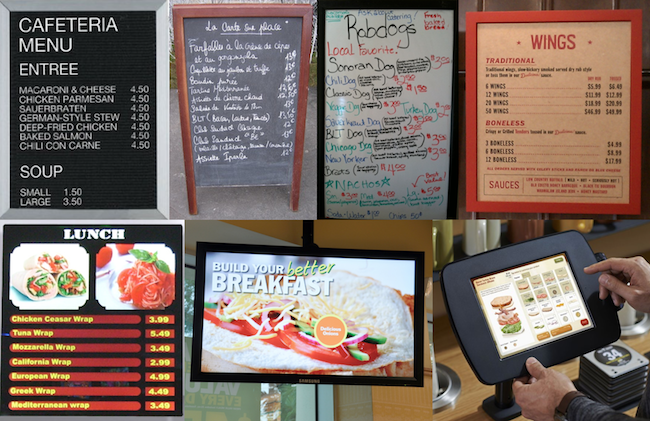Updated on: March 22, 2023
Time is up – The U.S. Food and Drug Administration has finalized a statute that requires chain restaurants and other retail food establishments to list nutritional information on menus and menu boards. From amusement park stands selling popcorn to table service restaurants, food establishments must follow the new requirements by May 1, 2017.
In an effort to provide clear and consistent calorie information the FDA has established the requirements, and SynergySuite has summarized them for you below.
1. Calories must be displayed on permanent menu items
If you sell a seasonal item that is shown for less than 60 days it is exempt, and does not need to list the calories.
2. The FDA requires the font size of calorie counts match that of the price shown
So customers can read them just as easily as the price…
3. Menu items must have the calorie counts displayed next to the item
Having a separate page or insert with caloric information is not permitted.
Compliance Tip
In order to comply with the new requirements, it’s important to calculate accurate calorie counts for each of your menu items.
Two ways to do this are:
1. Send a food sample for analysis which could be costly, or
2. Calculate calories using the list and measurement of ingredients which is more affordable.
SynergySuite‘s recipe management module stores ingredients for each menu item, and can integrate with nutritional databases to calculate and manage calorie counts. Having recipes centrally stored through SynergySuite makes it much easier to calculate calorie counts and comply with these new regulations.
4. A calorie range may be used for combo meals with multiple options
If your restaurant offers combo meals with three or more options that varies the number of calories in an item, a range, such as 400-600, can be shown on the menu.
5. Combo meals with two options are to be separated by a slash
For combos with only two options, the calories are required to be separated with a slash between each calorie count, for instance 350/550.
6. Menu must include a succinct statement about suggested daily caloric intake
Somewhere on the the menu a succinct statement regarding daily caloric intake must be included. Most common one used is “2,000 calories a day is used for general nutrition advice, but calorie needs vary.”
7. Availability of written nutrition information to be listed
A variation of this statement “written nutrition information is available upon request” is to be included somewhere on all menus, even on menu boards.
8. A printed document with nutrition information must be available
If a customer requests the written nutrition information, your restaurant is required to have printed versions for all available menu items. Detailed nutritional information must include: total calories, calories from fat, total fat, saturated fat, trans fat, cholesterol, sodium, total carbohydrates, fiber, sugars, and protein.
9. The calorie counts are to be shown in the same color as the price
Ensure the calories in an item are just a visible as the price. The calories must be in the same color, or just as an eye catching of a color that provides a similar contrast with the background.
10. Calories should have the same background as the menu item
Ensure the calories in an item are just a visible as the price. The calories must be in the same color, or just as an eye catching of a color that provides a similar contrast with the background.
11. All menus are required to be updated
The requirements above apply to the following menus: online menu, menu boards (digital & static), printed menus, outside/drive-thru menus, smartphone app menu, tablet app menu, POS menu.
Restaurants Covered
This new FDA statute covers the following chain restaurants and similar retail food establishments with 20 or more locations offering similar menu items:
• Meals from sit-down restaurants
• Foods purchased at drive-through windows
• Take-out food, such as pizza
• Made-to-order sandwiches, ordered from a menu or menu board at a delicatessen
• Foods you serve yourself from a salad or hot food bar
• Muffins at a bakery or coffee shop
• Popcorn purchased at a movie theater or amusement park
• A scoop of ice cream, milkshake or sundae from an ice cream store
• Hot dogs or frozen drinks prepared on site in a convenience or warehouse store
• Certain alcoholic beverages
Enforcement
The bill with these requirements was enacted December 18, 2015, but the Food and Drug Administration has delayed enforcement, starting May 1, 2017.






